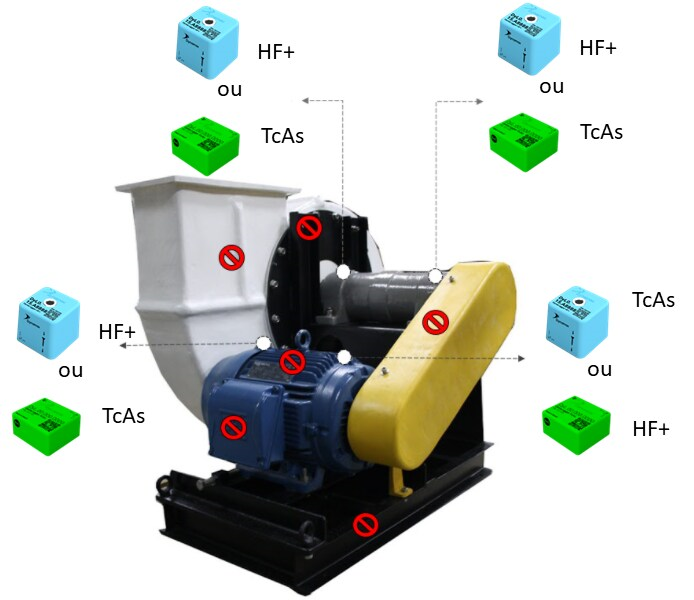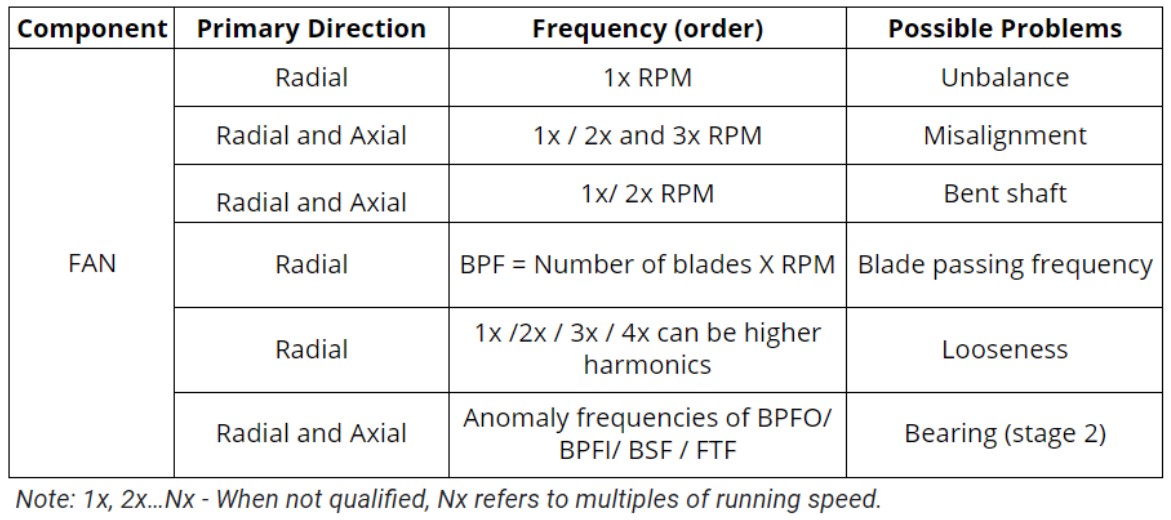Applications and good monitoring practices articles
Fans and Blowers
Updated at 2/24/2023
Blowers and fans are equipment used for ventilation, aeration, exhaustion, cooling and drying in various production processes in the most varied industries.
The fans are subject to forces generated by their operating speed, static pressures and system arrangement. These forces, called operational forces, cause forced vibrations and can originate from the rotating parts themselves. Unbalanced fan wheels and driving pulleys are examples of forces that can cause unbalance and misalignment. Another example is the axial load on the fan bearings, which is mainly generated by the negative static pressure at the inlet of the fan blades.
Due to the process in which this type of system is used, the most common fault modes are: unbalance, misalignment, eccentric pulleys, looseness and belts wear and structural looseness, identified at low frequencies. Also, some bearing problems, especially premature wear and tear generated by the fault modes mentioned above, can occur.
The DynaLogger TcAs, with its frequency range up to 2.5 kHz, is capable of identifying the mentioned faults, but the detection of bearing faults will occur at a more advanced stage. For detection in earlier stages and also for lubrication faults or electrical faults related to the rotor and stator, it is recommended to use the DynaLogger HF+ due to its larger frequency range, up to 13 kHz.
It is important to mount DynaLoggers on all bearing housings or rigid parts for effective monitoring. Avoid mounting sensors on flexible surfaces, on curves or that have localized resonance such as protective covers and fins.

Table1 – Typical fault frequency and its causes

Back to articles

